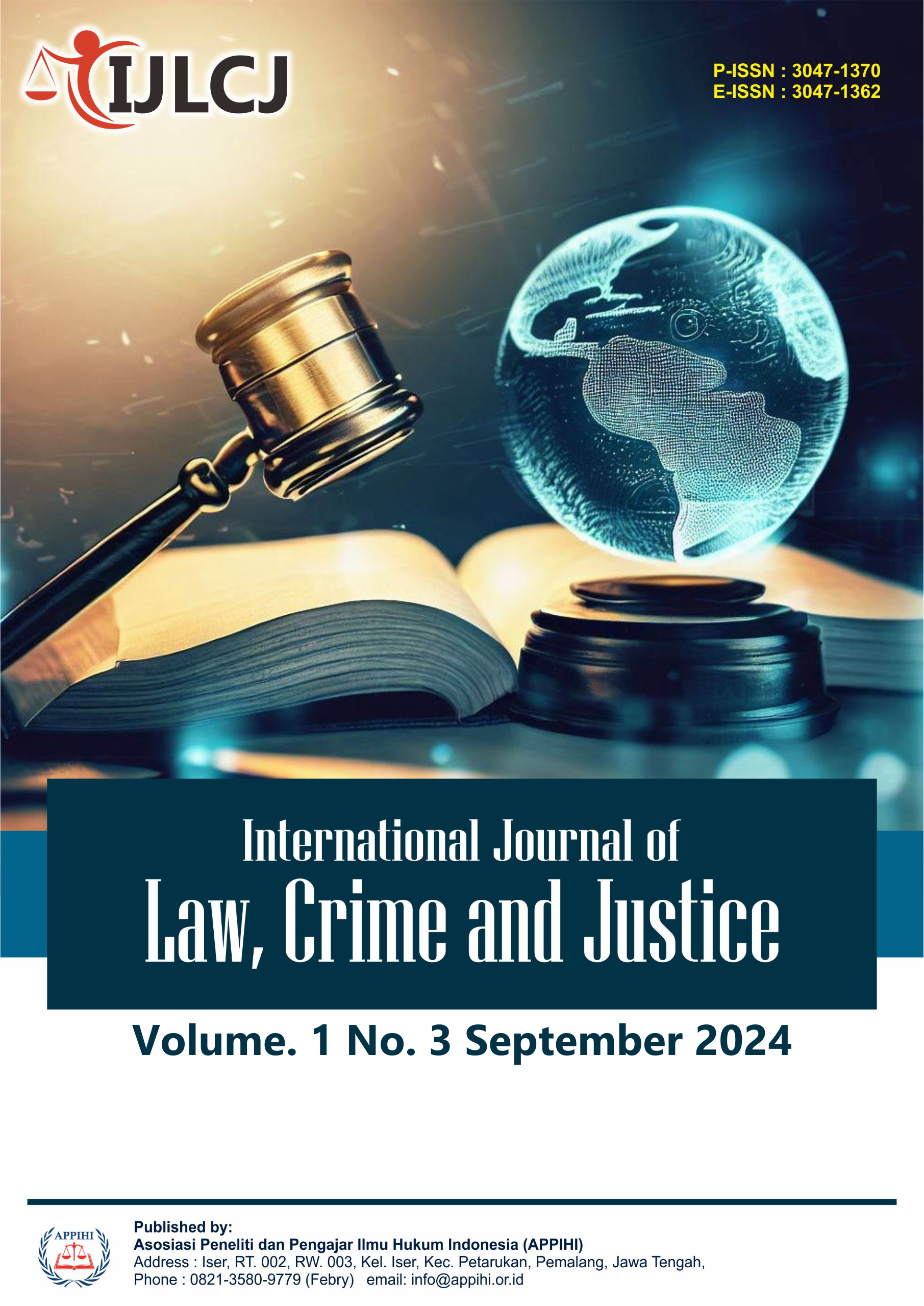Recognition of Electronic Signatures in Proving Civil Procedure Law in Indonesia
DOI:
https://doi.org/10.62951/ijlcj.v1i3.131Keywords:
Electronic Documents, Signatures, Evidence, ProofAbstract
This research is normative legal research that uses a normative judicial approach. The research results show that: (1) There are differences of opinion between judges, e-commers and notaries. regarding the strength of proof of a signature on an electronic document in proving civil procedural law in Indonesia. Judges and e-commers are of the opinion that electronic documents that have been signed with an electronic signature have the same evidentiary power as authentic deeds made by authorized officials, after the issuance of Law Number 11 of 2008 concerning Electronic Information and Transactions. Meanwhile, the notary is of the opinion that an electronic document signed with an electronic signature only has the power of proof under the hand, because it does not meet the requirements as an authentic deed, that is, it does not appear before an authorized official; and (2) Settlement of disputes resulting from non-fulfillment of the agreement can be resolved using a court or an institution outside the court, but e-comers generally use institutions outside the court because it is considered easier and faster to resolve and the costs are cheaper.The use of an electronic signature on an electronic document can guarantee the security of an electronic information message, which uses a public network, because electronic signatures are created based on asymmetric cryptography technology. From this research, there are differences of opinion regarding the evidentiary power of electronic documents signed with electronic signatures that are used as evidence in trials. The use of an electronic signature on an electronic document can guarantee the security of an electronic information message, which uses a public network, because electronic signatures are created based on asymmetric cryptography technology. From this research, there are differences of opinion regarding the evidentiary power of electronic documents signed with electronic signatures that are used as evidence in trials. Furthermore, electronic signatures need to be certified so that they have evidentiary power such as authentic deeds and there is no need to carry out digital forensic tests in the evidentiary process at trial.
Downloads
References
Aaron, R. (1999). Electronic commerce: Enablers and implications. IEEE Communication Magazine.
Adjie, H. (2008). Sanksi Perdata Dan Administratif Terhadap Notaris Sebagai Pejabat Publik. Bandung: Refika Aditama.
Khairandy, R. (2001). Pembaharuan Hukum Kontrak Sebagai Antisipasi Transaksi Electronic Commerce. Jurnal Hukum Bisnis, 16.
Mudiardjo, D. (2008). Telekomunikasi Dan Teknologi Hukum E-commerce. Diakses dari www.google.com.
Soekanto, S., & Mamudji, S. (1990). Penelitian Hukum Normatif Suatu Tinjauan Singkat. Jakarta: Rajawali Press.
Soemitro, R. H. (1990). Metodologi Penelitian Hukum Dan Judimetri. Jakarta: Ghalia Indonesia.
Supancana, I. B. R. (2008). Kekuatan Akta Elektronik Sebagai Alat Bukti Pada Transaksi E-commerce Dalam Sistem Hukum Indonesia. Jurnal Hukum Bisnis, 22.
Wawancara dengan Ahmad Hidayat, Pamekasan, 11 Desember 2023.
Wawancara dengan Desi Arisanti, Pamekasan, 12 Desember 2023.
Wawancara dengan Leanni Bharline, Pamekasan, 12 Desember 2023.
Wawancara dengan Mia Lestari, Pamekasan, 13 Desember 2023.
Wawancara dengan Nursiah Sianipar, Pamekasan, 12 Desember 2023.
Wawancara dengan Thamrin, Pamekasan, 13 Desember 2023.
Wawancara dengan Toni Iskandar, Pamekasan, 12 Desember 2023.
Wibowo, A. M. (1999). Kerangka Hukuum Digital Signature Dalam Electronic Commerce. Diakses dari amwibowo@caplin.cs.ui.ac.id.
Downloads
Published
How to Cite
Issue
Section
License
Copyright (c) 2024 International Journal of Law, Crime and Justice

This work is licensed under a Creative Commons Attribution-ShareAlike 4.0 International License.





